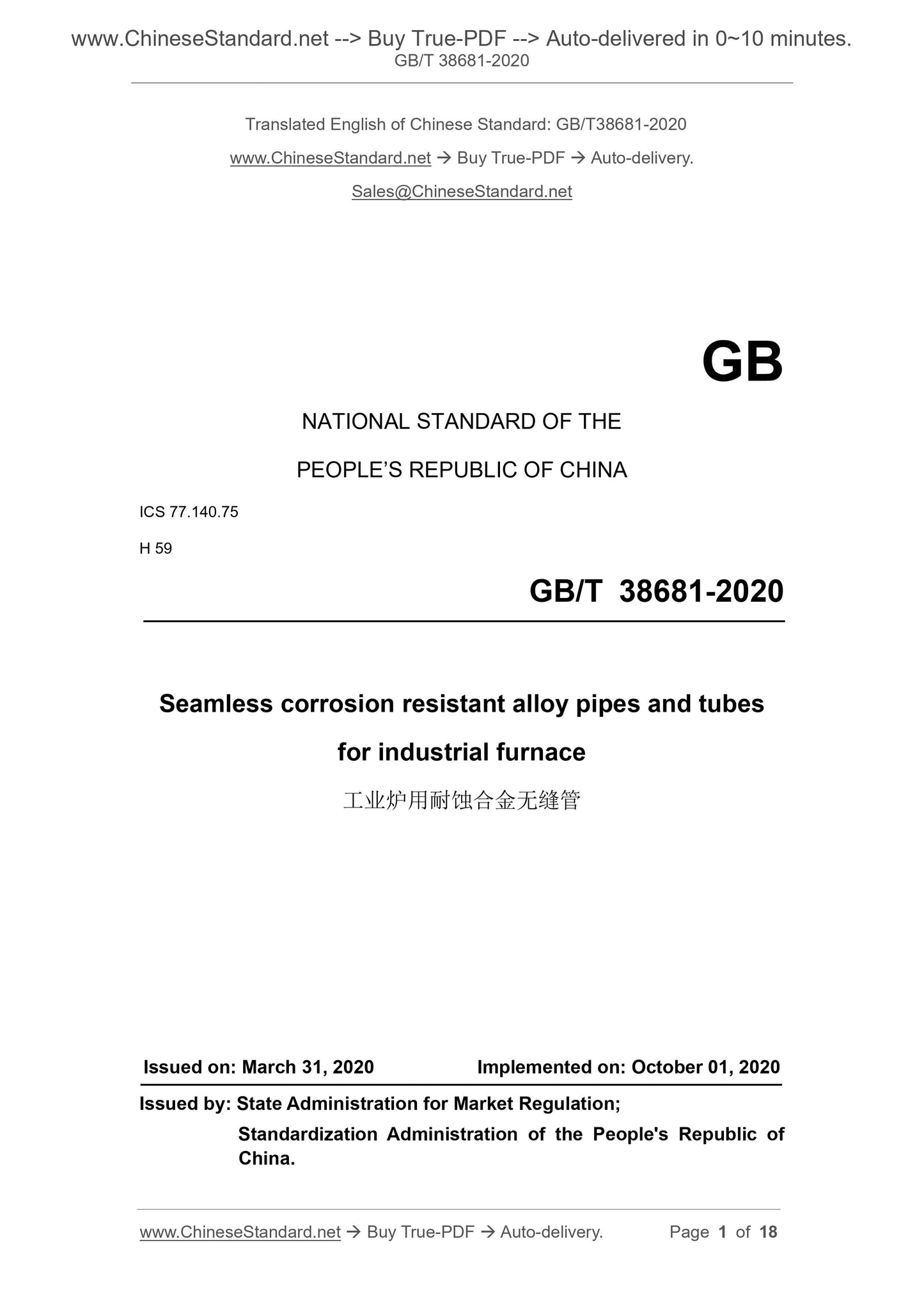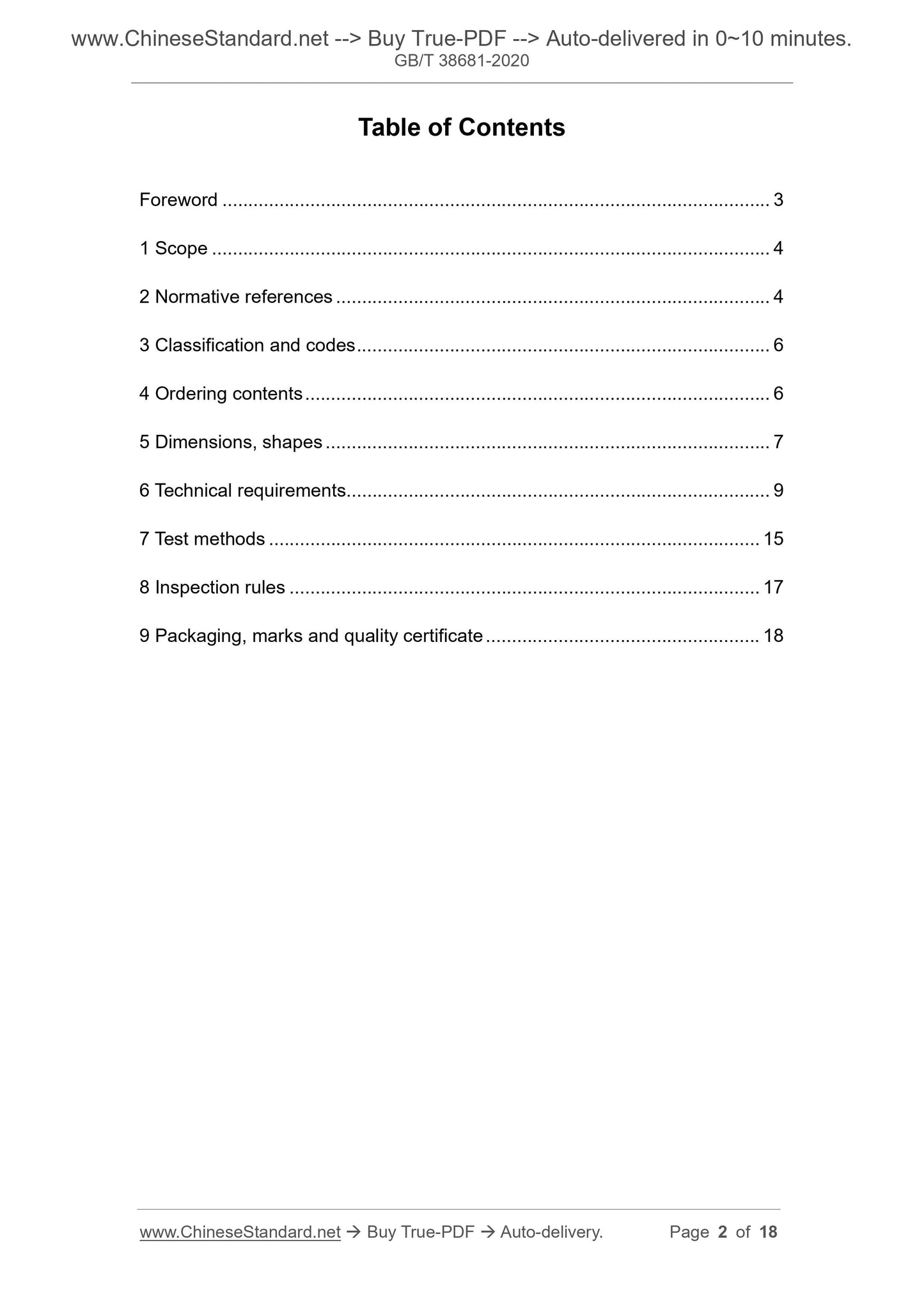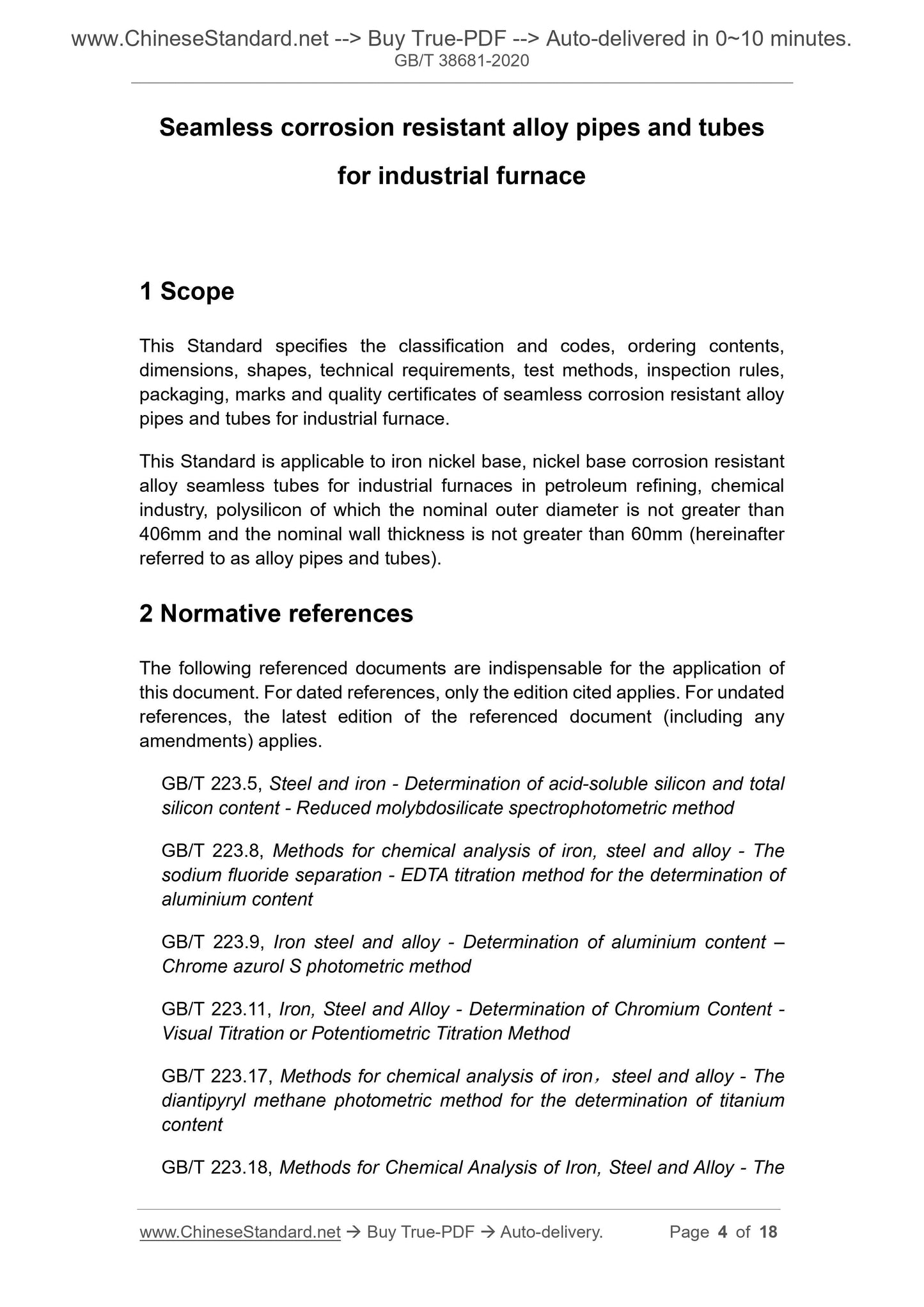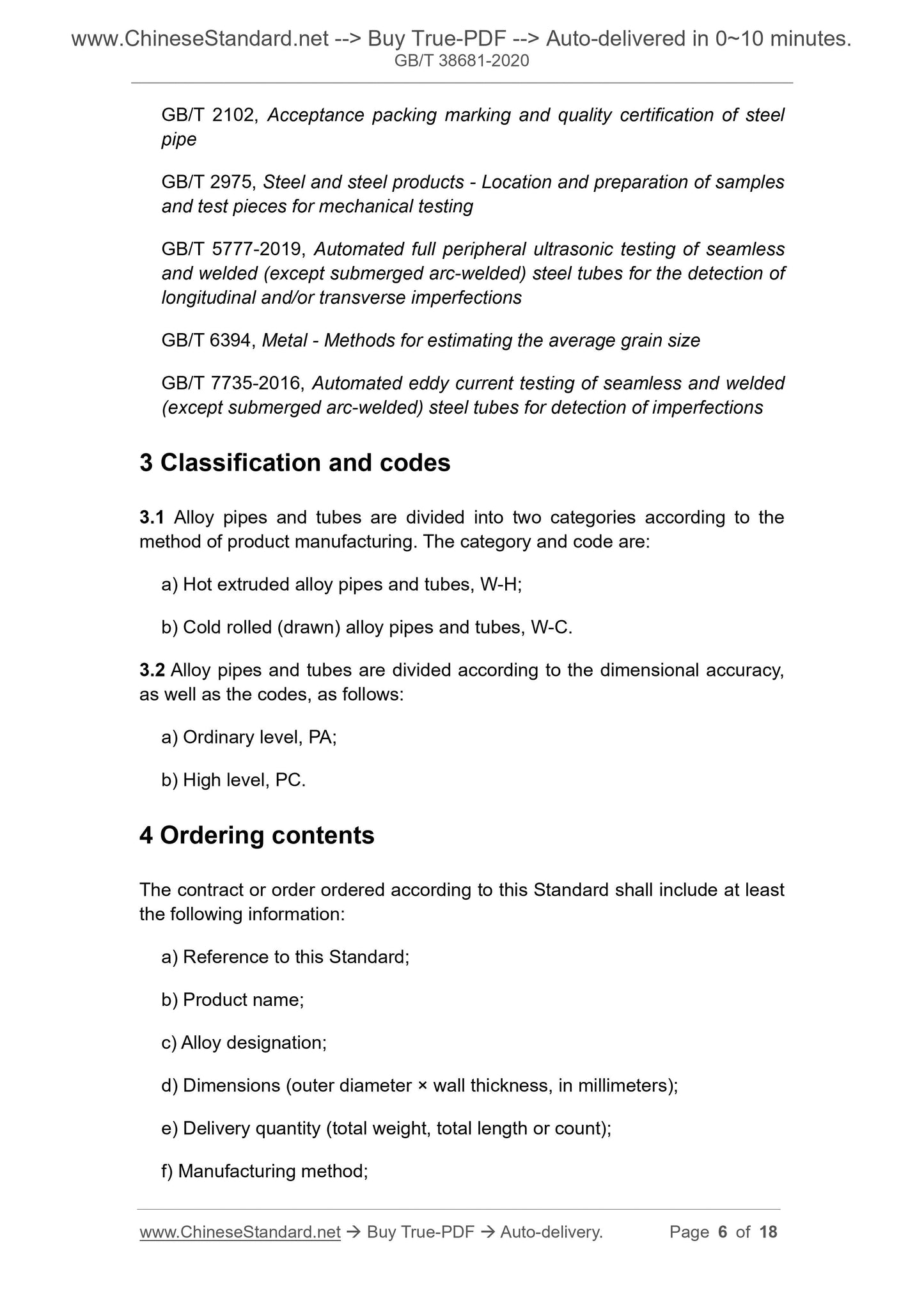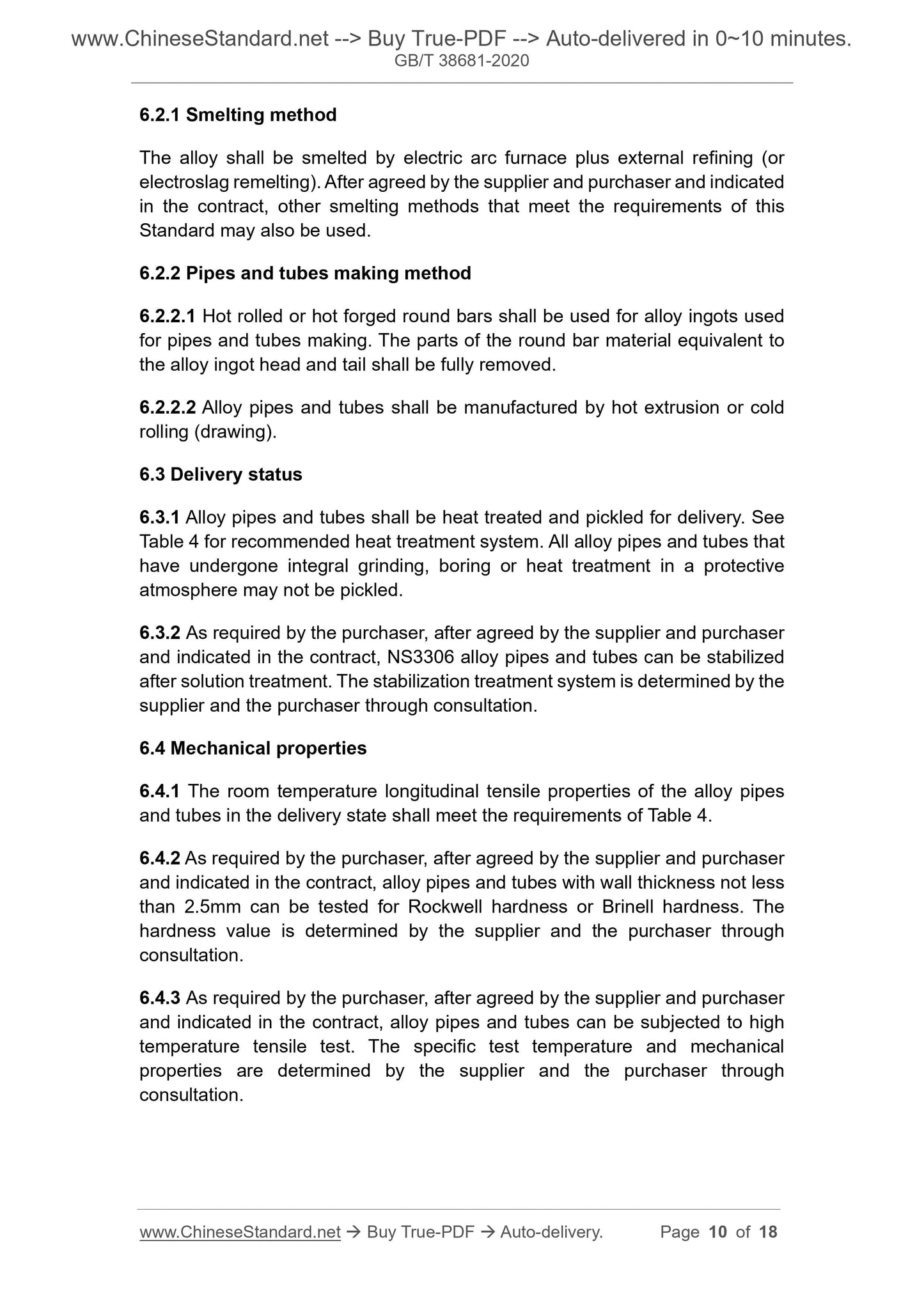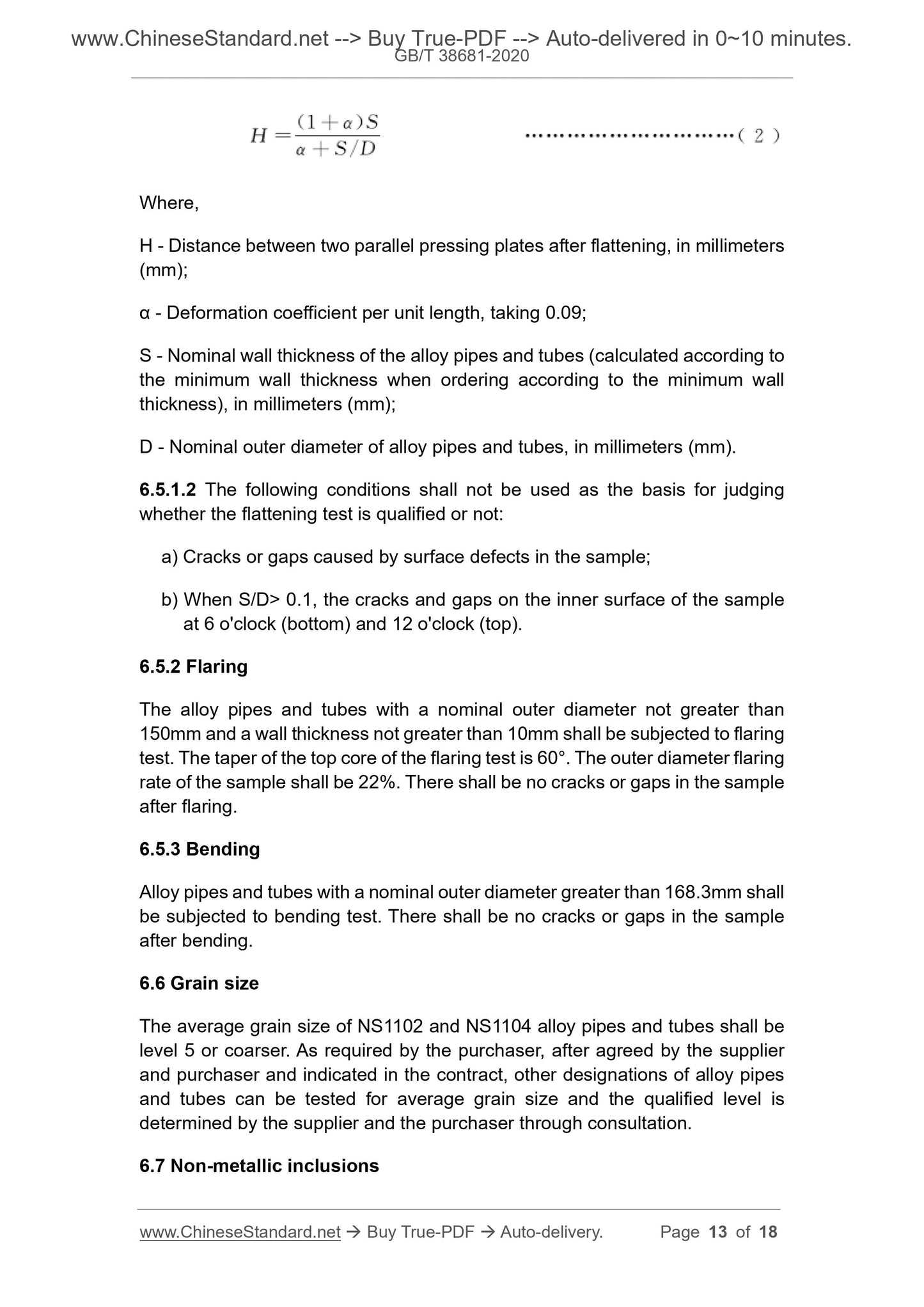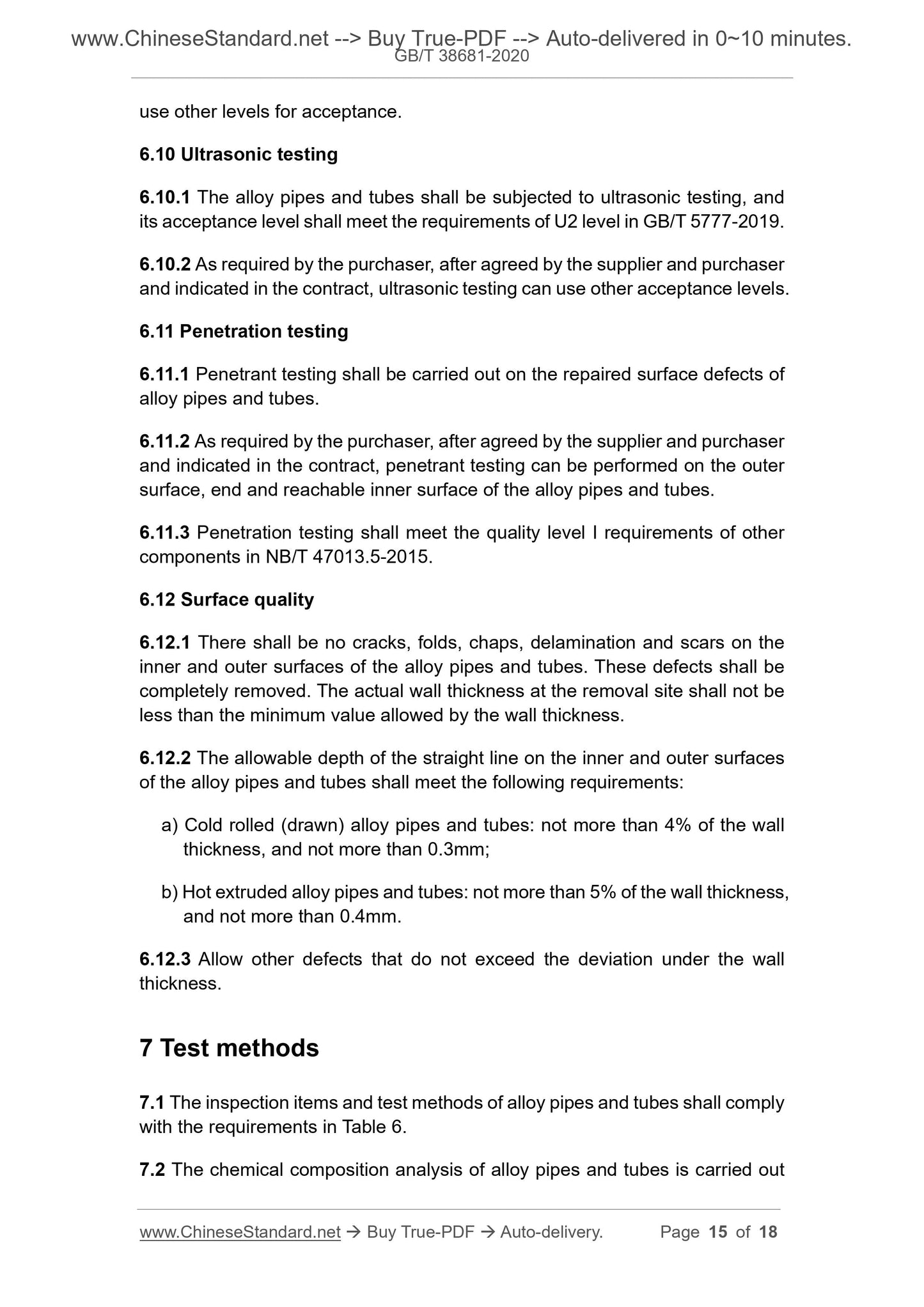1
/
of
7
www.ChineseStandard.us -- Field Test Asia Pte. Ltd.
GB/T 38681-2020 English PDF (GB/T38681-2020)
GB/T 38681-2020 English PDF (GB/T38681-2020)
Regular price
$165.00
Regular price
Sale price
$165.00
Unit price
/
per
Shipping calculated at checkout.
Couldn't load pickup availability
GB/T 38681-2020: Seamless corrosion resistant alloy pipes and tubes for industrial furnace
Delivery: 9 seconds. Download (and Email) true-PDF + Invoice.Get Quotation: Click GB/T 38681-2020 (Self-service in 1-minute)
Newer / historical versions: GB/T 38681-2020
Preview True-PDF
Scope
This Standard specifies the classification and codes, ordering contents,dimensions, shapes, technical requirements, test methods, inspection rules,
packaging, marks and quality certificates of seamless corrosion resistant alloy
pipes and tubes for industrial furnace.
This Standard is applicable to iron nickel base, nickel base corrosion resistant
alloy seamless tubes for industrial furnaces in petroleum refining, chemical
industry, polysilicon of which the nominal outer diameter is not greater than
406mm and the nominal wall thickness is not greater than 60mm (hereinafter
referred to as alloy pipes and tubes).
Basic Data
| Standard ID | GB/T 38681-2020 (GB/T38681-2020) |
| Description (Translated English) | Seamless corrosion resistant alloy pipes and tubes for industrial furnace |
| Sector / Industry | National Standard (Recommended) |
| Classification of Chinese Standard | H59 |
| Classification of International Standard | 77.140.75 |
| Word Count Estimation | 11,122 |
| Date of Issue | 2020-03-31 |
| Date of Implementation | 2020-10-01 |
| Quoted Standard | GB/T 223.5; GB/T 223.8; GB/T 223.9; GB/T 223.11; GB/T 223.17; GB/T 223.18; GB/T 223.25; GB/T 223.28; GB/T 223.59; GB/T 223.63; GB/T 223.65; GB/T 223.69; GB/T 223.79; GB/T 228.1; GB/T 228.2; GB/T 230.1; GB/T 231.1; GB/T 232; GB/T 241; GB/T 242; GB/T 246 |
| Issuing agency(ies) | State Administration for Market Regulation, China National Standardization Administration |
| Summary | This standard specifies the classification and code, order content, size, shape, technical requirements, test methods, inspection rules, packaging, marking and quality certificates of corrosion-resistant alloy seamless pipes for industrial furnaces. This standard applies to iron-nickel-based and nickel-based corrosion-resistant alloy seamless pipes (hereinafter referred to as alloy pipes) for industrial furnaces in petroleum refining, chemical industry, polysilicon and other industries with a nominal outer diameter of not more than 406 mm and a nominal wall thickness of not more than 60 mm. . |
Share
